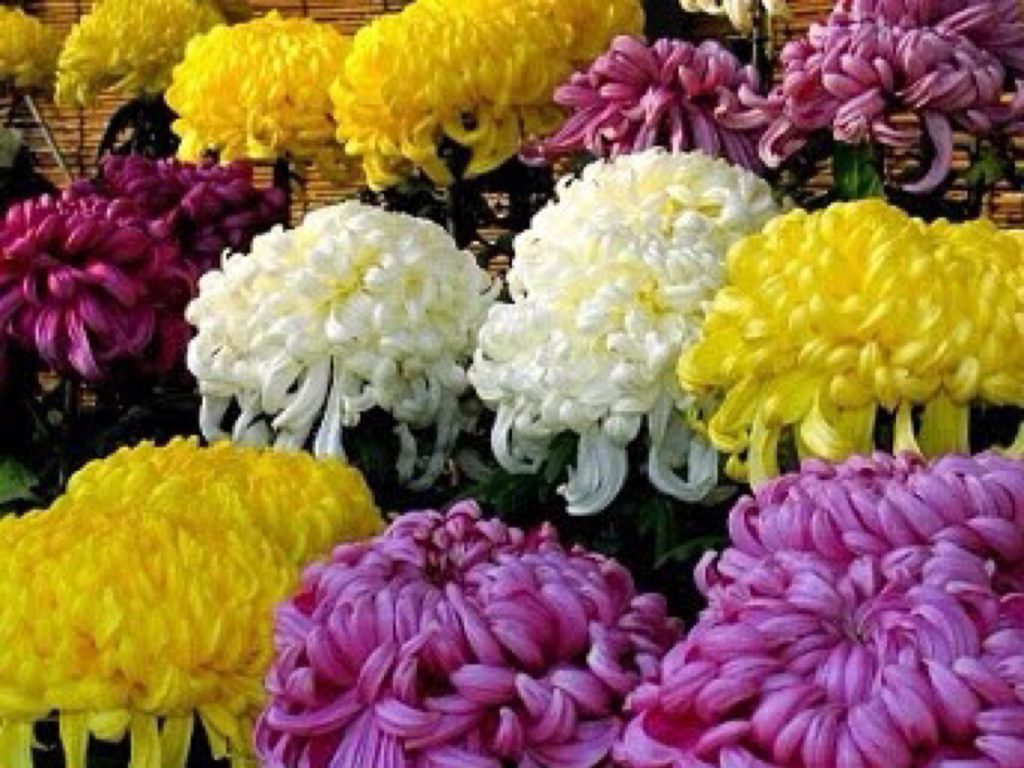
The chrysanthemums exhibition, which was canceled last year, was held for the first time in two years. There is a way to say “waiting for a good opportunity for two years”, but it must have been a long-awaited two years for chrysanthemum lovers. Stunning chrysanthemums with great care, such as three-tiered tailoring, cliff making, and daruma making, are on display. The chrysanthemum, which symbolizes autumn in Japan as opposed to the cherry blossoms in spring, began to attract attention at the beginning of the Kamakura period, when Emperor Go-Toba liked the design of chrysanthemum flowers and made the “chrysanthemum crest” the family crest of the imperial family. The breeding of chrysanthemums began at once from the Edo period, and at the end of the Tokugawa shogunate, they were reimported to China, the head family, and changed the situation of chrysanthemums in China. Also, even in Europe, which was not very popular at first, a British plant hunter, Robert Fortune, who visited Japan at the end of the Edo period, brought back Japanese chrysanthemums to his home country and quickly spread all over Europe.
昨年は中止になった菊花展が二年ぶりに開催されました。雌伏二年と言えば大袈裟ですが、菊の好事家にとっては待ち遠しい2年間だったに違いありません。三段仕立て、懸崖づくり、ダルマづくりなど、丹精を込めた見事な菊が展示されています。春の桜に対して日本の秋を象徴する菊は、鎌倉時代の初め、後鳥羽上皇が菊の花の意匠を好み、「菊紋」を皇室の家紋とした頃から注目され始められました。菊の育種が一気に展開したのはやはり江戸時代からで、幕末には本家の中国に逆輸入され、中国の菊事情を一変させました。また、当初なかなか人気が出なかったヨーロッパでも、幕末の日本を訪れたイギリスのプラントハンター、ロバート・フォーチュン人が日本の菊を本国に持ち帰り、瞬く内にヨーロッパ中にひろまりました。
